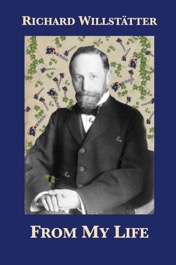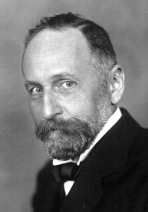
Richard Willstätter
Born into a Jewish family in Karlsruhe, Richard Willstätter (1872-1942) attended the Technical High School in Nuremberg and the University of Munich where he studied chemistry under Adolf von Baeyer, receiving his doctorate in 1894 for work on the structure of cocaine. He then joined the faculty, continuing his research on alkaloids. In 1905 he became professor at the ETH Zürich where he determined the formula of chlorophyll. In 1912 he moved to Berlin where he became professor of chemistry at the University, and director of the Kaiser Wilhelm Institute for Chemistry. He studied pigments in flowers and fruits and showed that chlorophyll is a mixture of two compounds, chlorophyll a and chlorophyll b. He received the Nobel Prize for Chemistry in 1915.
Asked in 1915 by his friend Fritz Haber to help develop poison gasses, Willstätter refused but worked on protection, developing an effective filter for which he received the Iron Cross. In 1916 he returned to the University of Munich as successor to his mentor, von Baeyer, and investigated the mechanisms of enzyme reactions.
In 1924, Willstätter retired (at age 52) to protest the University’s growing antisemitism and continued his research at his Munich home. In 1939 Willstätter emigrated to Switzerland and spent the last three years of his life near Locarno writing his autobiography Aus meinem Leben, which appeared in German in 1949 and was translated into English in 1965 as From My Life.
Click on the cover for details about the eBook:






